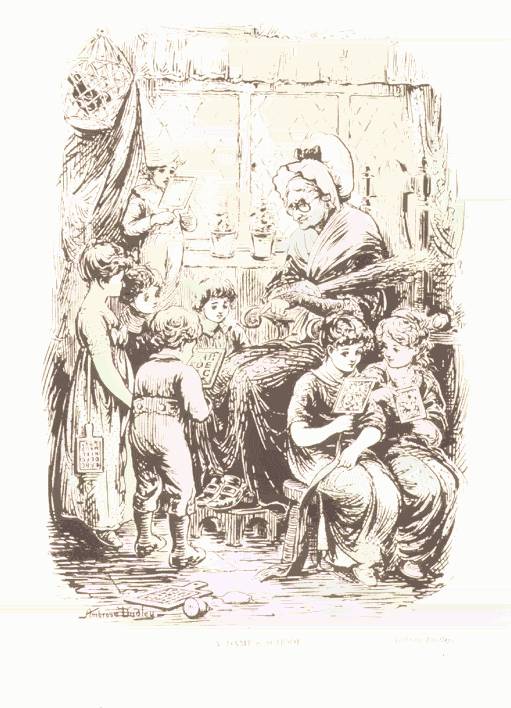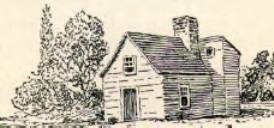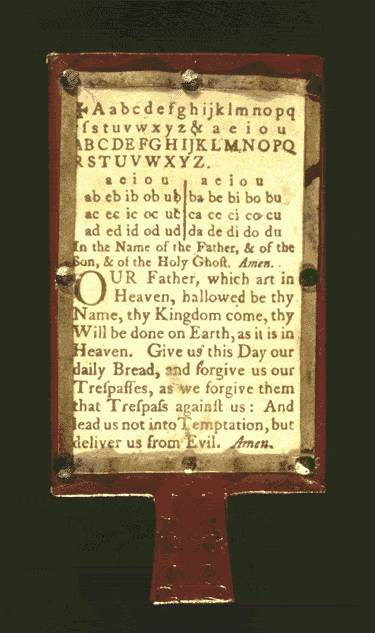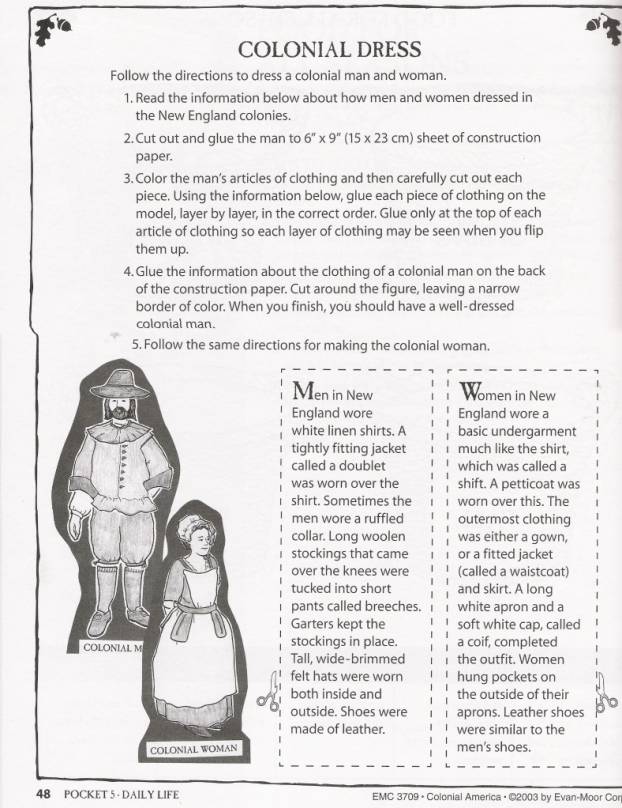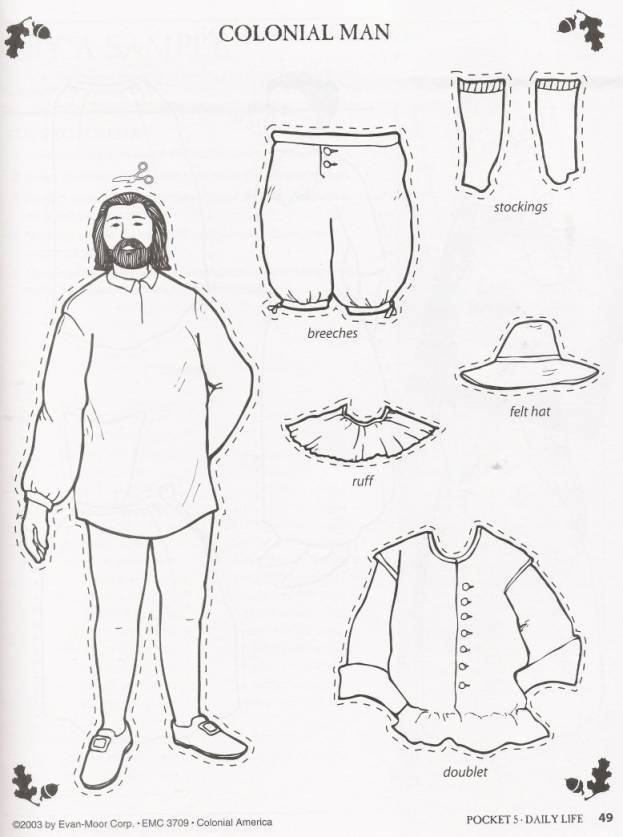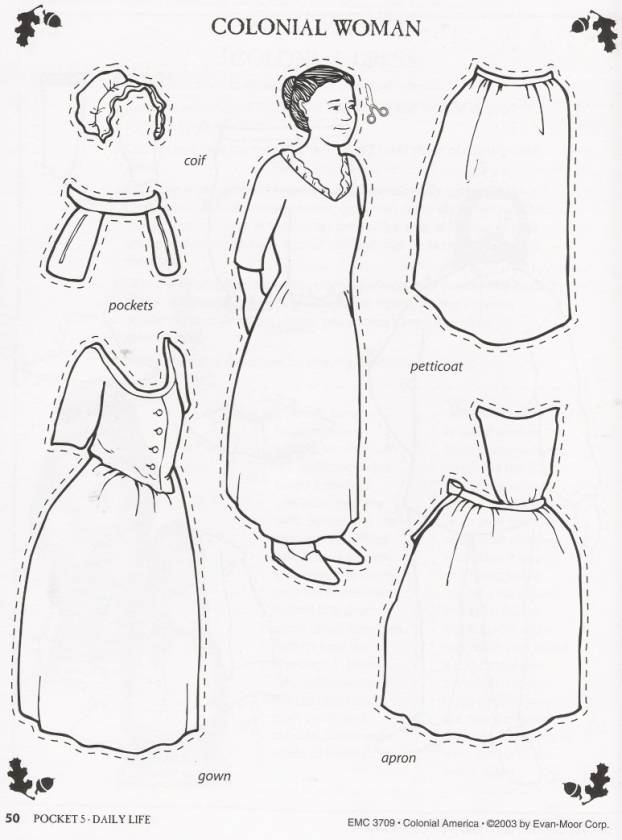


Designed By:
Tiffany Bucko
Unit
Objectives and Standards Alignment:
By the end of the unit students
will:
|
Unit objectives |
NCSS Standards |
CT. Standards |
|
Understand when, who, where and why did colonists settled in
Connecticut? |
Time, Continuity, and
Change; People, Places, and
Environments; Individual Development and Identity |
Historical Thinking; Places
and Regions; Human and Environmental Interaction; Human Systems |
|
How to communicate/
education. |
Time, Continuity, and
Change; People, Places, and Environments |
Historical Thinking; Human
Systems |
|
What are colonial customs
and manners? Topics include religious
beliefs, lodging, clothing, food, recreation, responsibilities, family life,
and health. |
Time, Continuity, and Change; People, Places, and Environments;
Culture; Individuals, Groups, and Institutions |
Historical Thinking; Human
Systems; Historical Themes |
|
Explore Colonial Economy
including currency and trade. |
Time, Continuity, and
Change; Production, Distribution,
and Consumption. |
Economic Systems, Economic
Interdependence |
|
Define the relationships
and class structure inside the colony. |
Time, Continuity, and
Change; People, Places, and
Environments; Culture; Individuals, Groups, and Institutions |
Historical Thinking; Human
Systems; Historical Themes |
Overview to Unit:
PowerPoint Slide Show - - Daily Life In Colonial
Connecticut
Designed
by Tiffany Bucko
ColonialConnecticutDailyLife.ppt
Colonial
Towns and Homes
Designed by Tiffany Bucko
National
Standards Alignment:
1.) Standard 2: Time, Continuity, and Change
2.) Standard 3: People, Places, and Environments
3.) Standard 4: Individual Development and Identity
4.) Standard 6: Power, Authority, and Governance
Lesson Objectives:
1.) Students will be able to describe a colonial Connecticut village.
2.) Students will be able to describe a “typical” early Connecticut home.
3.) Students will be able to compare and contrast a colonial Connecticut village to their present day town.
4.) Students will be able to compare and contrast a “typical” colonial Connecticut home to the homes of the present.
Materials:
· White construction paper
· Crayons or markers
· Social Studies Journal
Lesson Activities and
Procedures
Lesson Initiation:
1.) Teacher shows class pictures of colonial Connecticut town such as New Haven, Hartford, and Windsor. Then show pictures of what the towns look like today.
2.) Teacher and students engaged in a discussion about what is the same and different in the pictures. The teacher makes a list of the similarities and differences the students discover on the blackboard.
Lesson Explanation:
1.) Teacher uses the list to lead into an explanation about colonial Connecticut town and village layouts while also briefly discussing what colonial Connecticut homes were like. The teacher should list key components of what a town or village looked like on the blackboard so that later on in the lesson students my use the list as a reference.
2.) The teacher then informs students that they will be designing their own town or villages based on the information the teacher has told them.
3.) Students break into groups and discuss what they want to include on their town map. Students should be encouraged to add additional components to their towns, as long as they would have existed in the colonial era.
4.) When the teacher notices that students are done designing their maps the teacher calls back the students. Groups describe their maps to the rest of the class.
5.) At the end of the class discussion, all students will compare and contrast colonial Connecticut towns with those of today in their Social Studies Journal.
Lesson Expansion:
Students who want an extra challenge would be directed to “build” a colonial home. Before they may actually “build” a home, they would need to research the contents of a colonial Connecticut home. Students could browse through the books about colonial Connecticut in their classroom or search the Internet for information. After they have found adequate information they may begin “building” a home. The home will be “built” out of folded paper, as directed in Appendix 1. Once students “build” their home they should also furnish it with colonial period accompaniments. At the end of the activity, the student should compare and contrast homes of today with those of colonial Connecticut.
Assessment:
Students grasp of colonial Connecticut towns and villages will be assessed via each student’s responses in their Social Studies Journal.
Accommodations:
In the group work portion of the lesson, all students should be able to use one another to help them learn. However, if students have difficulty working in groups, they may work individually. Also, at the end of the lesson, the teacher will provide as much time as necessary for all students to write in their Social Studies Journal.
Colonial
Food and Drink
Designed by Tiffany Bucko
National
Standards Alignment:
1.) Standard 2: Time, Continuity, and Change
2.) Standard 4: Individual Development and Identity
3.) Standard 6: Power, Authority, and Governance
Lesson Objectives:
1.) Students will be able to explain colonial table customs.
2.) Students will be able to recognize and describe the diet of colonial Connecticut residents.
Materials:
· Picture of a colonial meal (see Appendix 4)
· Various colonial cookbooks from the era
· Computer with a word processing program
Lesson Activities and
Procedures
Lesson Initiation:
1.) The teacher initiates the lesson by showing the class the picture found in Appendix 4. The teacher should ask students to describe what they see. As students are giving answers, the teacher should write the replies on the blackboard.
2.) The teacher then uses the students’ observations of the picture as a springboard into a lesson about food. The teacher will discuss with the class the diet of the Connecticut colonists and the customs that occurred along with eating meals.
Lesson Explanation:
1.) The teacher informs the class that they will be making a cookbook that might be found in a colonial Connecticut home.
2.) Students break up into groups and use the books provided by the teacher to help them research different foods and recipes from the time period.
3.) When students find a recipe that they would like to include in the class cookbook, they inform the teacher of their choice so that other groups may not choose the same recipe.
4.) Once students have an acceptable recipe, they may type it up on a word processing program and when finished should print it out.
5.) When the entire class is finished, a student-lead discussion is held in which each group states the recipe they chose and why they chose it.
6.) At the end of the activity, the teacher complies all the recipes into a class cookbook and displays it in the classroom library.
Lesson Expansion:
The class may hold a colonial Connecticut feast in which they sample food from the time period. Students choose a recipe from the era and make it for the class to share. The recipe may come from any cookbook but the class cookbook is preferred. Students grasp of colonial table manners may be assessed through this expansion activity as well.
Assessment:
Students grasp of colonial Connecticut diet will be assessed through the choice of recipe, as well as, each group’s response to their reasoning behind choosing the recipe. These responses will be assessed using the Collaborative Work Skills rubric found in the Appendix 5.
Accommodations:
Students who need help reading or writing may receive that support via the group dynamics of the activity. Also, if need be, students whom have difficulties working with others may complete this assignment on their own.
Colonial
Connecticut Clothing
Designed by Tiffany Bucko
National
Standards Alignment:
1.) Standard 2: Time, Continuity, and Change
2.) Standard 4: Individual Development and Identity
3.) Standard 6: Power, Authority, and Governance
Lesson Objective:
1.) Students will be able to describe all pieces of male and female clothing in colonial Connecticut.
Materials:
· Story: Sarah Morton’s Day: A Day in the Life of a Pilgrim Girl by Kate Waters
· 1 Colonial Man and Woman Packet (see Appendix 3) per student
· Construction paper
· Scissors
· Glue
· Crayons or markers
· Social Studies Portfolio
Lesson Activities and
Procedures
Lesson Initiation:
1.) Teacher will read pages 6 and 7 in the book Sarah Morton’s Day: A Day in the Life of a Pilgrim Girl, where Sarah describes getting dressed for the day.
2.) The teacher then questions students about what they heard and saw in the excerpt.
Lesson Explanation:
1.) Teacher hands out Appendix 3 to every student and students go to work completing the packet.
2.) When students are finished, the teacher reconvenes a class discussion about what students learned. Students should be encouraged to share their figures and explain them to the class.
3.) At the end of the lesson, students may choose to include their colonial figures in their Social Studies Portfolio.
Lesson Expansion:
Students who finish the assignment early may look through the class library of books about colonial Connecticut clothing or may choose to search the topic on the Internet.
Assessment:
Students’ descriptions of their figures to the class will be assessed based on the Class Discussion Rubric found in the Rubric Appendix.
Accommodations:
If students have difficulty following directions they may work with a partner to complete the assignment.
Education
In Colonial Connecticut
Designed by Tiffany Bucko
National Standards
Alignment:
1.) Standard 2: Time, Continuity, and Change
2.) Standard 4: Individual Development and Identity
3.) Standard 6: Power, Authority, and Governance
Lesson Objectives:
1.) Students will be able to describe the education of children in colonial Connecticut.
2.) Students will be able to compare and contrast a modern 21st century education with that of colonial Connecticut.
Materials:
· Hornbook
· Quill pen
· India ink
· Writing or bond paper
· Blotter paper
· Behavioral student signs
· Dunce cap
· Cleft stick
· Social Studies Journal
Lesson Activities and
Procedures
Lesson Initiation:
1.) Teacher will open the lesson by showing students the image in Appendix 2. Students should critically analyze what is happening in the image and apply it to how school is taught today. The teacher should write students responses on the blackboard and use them as a springboard into the lesson about Dame school in Connecticut.
2.) Based on students’ responses, the teacher continues on and provides students with more information about colonial education.
Lesson Explanation:
1.) In order for students to fully understand what conditions were like in a colonial school setting, the teacher will simulate a “typical” day in a Dame school.
2.) As part of the simulation, students will practice reciting from a Hornbook and practice writing using a quill pen and ink. These 2 activities will be done simultaneously like they would have in a Dame school.
3.) During the simulation all rules of punishment, such as dunce caps and behavioral signs, should be used to add to the effects of the simulation.
4.) Teacher calls the simulation to an end and all students discuss how they felt, what they thought of colonial education, or anything the students feel pertinent to talk about in relation to the simulation.
5.) After the class discussion, all students write an entry in their Social Studies Journal about what they learned, experienced, or took away from the simulation.
Lesson Expansion:
1.) Paper, ink, and quill pens may be made to help authenticate the simulation. These objects may be made in either a modern fashion or by following historical methods.
2.) Students may build their own Hornbooks and include information that they feel would have been on the book.
3.) Students may visit a historic school and experience the simulation in a more believable setting.
Assessment:
Students Social Studies Journal entries will be used to help assess their understanding of colonial Connecticut education.
Accommodations:
The simulation will help students work on controlling themselves in social situations. If students have a learning disability in which they have problems reciting or writing information, the teacher will see them through the simulation and help when needed.
 When
you have finished “building” your home, please compare
When
you have finished “building” your home, please compare